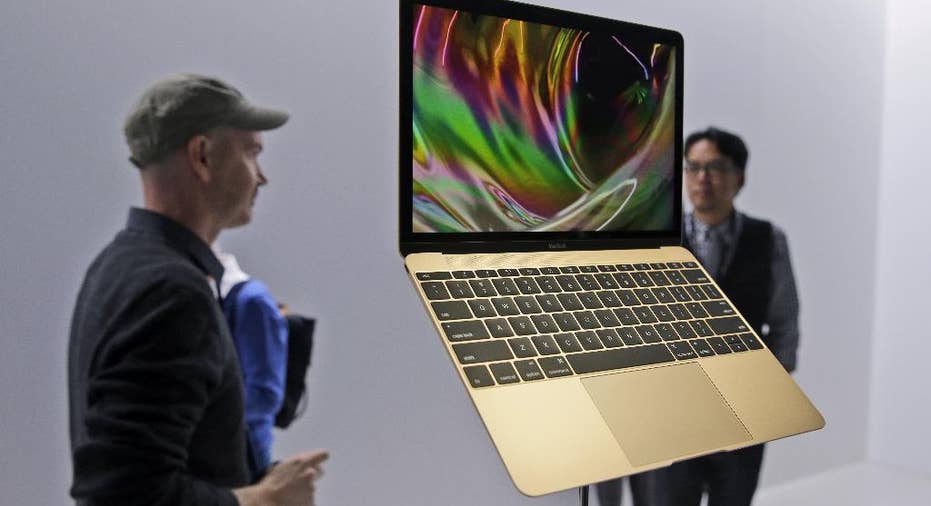First Look: New MacBook impresses, though some users may miss accessory ports, SD card slot

SAN FRANCISCO – The MacBook Air was revolutionary when Apple started selling it in 2008. Though still thin and light, the Air now feels like a cheap cousin next to more powerful MacBook Pro laptops and Windows laptops known as ultrabooks.
So Apple returned to the drawing board and came up with a two pound, energy-efficient, silent machine it's calling, simply, the MacBook.
The little time I had with it was enough to impress. The MacBook is thinner and lighter than the Air. It feels like an iPad, except with a regular keyboard and screen. In fact, the MacBook incorporates many of the design techniques Apple learned from the iPad, including making the laptop work without a fan and squeezing all the electronics onto a small card, known as the logic board.
The MacBook, which goes on sale April 10, isn't cheap — but it's reasonably priced for a Mac laptop. The $1,299 model comes with 256 gigabytes of storage. That's double what you get on the $899 Air version. It's the same amount of storage you get for the $1,099 Air but MacBook's high-resolution screen is much better. For $300 more, you get a MacBook with faster processor and 512 gigabytes of storage.
MacBook's 12-inch screen is the "Retina" display found in the latest MacBook Pros, iPhones and iPads. I hadn't found the Air's screen problematic but once you see the crisp text on Retina, you start noticing the Air's deficiencies.
The new MacBook's keyboard promises better precision and extends all the way to the left and right sides of the laptop. That's similar to how the frames on phones have shrunk to maximize screen space. Apple kept a full-size keyboard — a wise decision, as smaller keys placed more closely to each other can be difficult to type.
The new MacBook also has an improved trackpad. It's designed in such a way that it should feel the same wherever you tap it. With the current Air, the mouse-click capabilities are along the edge closer to you. The new trackpad also enables new controls. If you hover over an icon and press on the trackpad for a few seconds, a preview of the file opens.
What's the catch?
Apple has a history of ditching older technologies as it comes out with new designs. The iMac got rid of the floppy disk drive long before other PCs did. The Air dropped the DVD drive and eventually traditional hard drives (it uses flash memory, similar to iPhones and iPads). The new MacBook drops USB ports, which are common for printers and other accessories. (Ironically, it was the iMac that popularized USB.)
In Apple's mind, who needs accessories when you do just about everything wirelessly?
Apple's proprietary MagSafe power-charging port has been replaced with a standardized USB Type-C connection. It's an emerging technology that will also connect accessories and serve as a display output. It's like taking all of the Air's existing ports and squeezing them into this new Type-C one. The difference is you need to share that port among your various chargers and accessories. And there are few that work with Type-C for now, so you'll need to buy adapters.
The new MacBook also lacks an SD slot for camera memory, something the 13-inch MacBook Air has but the 11-inch does not. Then again, few people take photos on stand-alone cameras these days. Battery life is comparable to the 11-inch Air, but a few hours short of the 13-inch version.
The new MacBook isn't going to be for everyone, but neither was the Air. Some people will find the screen too small, and others will still need those ports and SD card slot. But it does show that Apple isn't giving up on the Mac, even as most of the attention has shifted to iPhones, iPads and now the Apple Watch.



















